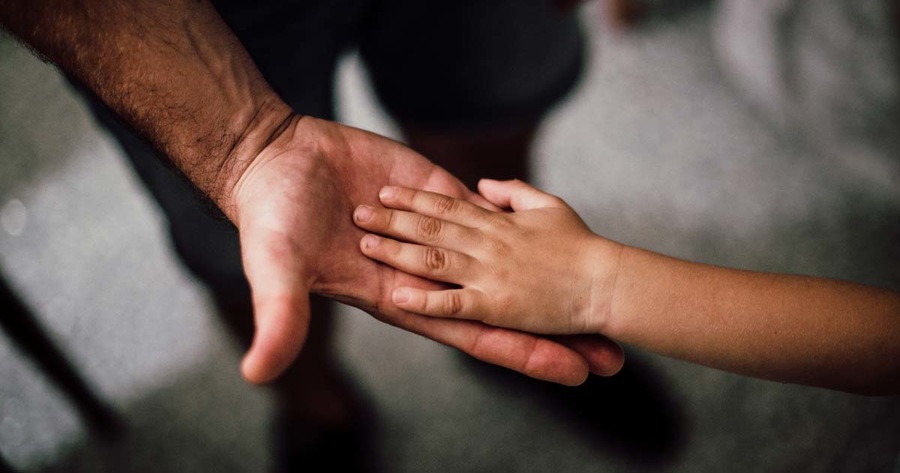It's imperative to support immigrant families who have been negatively affected by the trauma of separation, and who will likely continue to experience considerable adversity in the future, even if reunited with their loved ones. Learn what can be done.
While the President has issued an Executive Order to end the practice of separating children from their parents, we call attention to the critical need that still exists: to support immigrant families who have been negatively affected by the trauma of separation, and who will likely continue to experience considerable adversity in the future, even if reunited with their loved ones.
As public officials and communities turn to reuniting and supporting immigrant children and parents, they face the difficult but essential task of helping these families cope with and recover from trauma caused by separation, detention, and fear of deportation. To respond to the well-documented negative consequences of forcible separation, we offer the following research-based guidance for parents, service providers, communities, and policymakers:
- Ensure that the immigrant population does not suffer re-traumatization through detention and deportation practices that risk separating families and cause further psychological harm.
- Help families access evidence-based practices and treatment to address trauma.
- Integrate trauma-informed care into the multiple systems with which the immigrant population interacts (e.g., detention centers, education, juvenile justice, physical and behavioral health), in culturally responsive ways.
Research shows that children can recover and thrive after experiencing a traumatic event such as forcible separation. A strong and growing evidence base indicates that trauma-informed care (TIC) can promote resilience among children and families who experience traumatic events or circumstances.
TIC is an approach to working with children and adults that includes:
- Understanding the impact of trauma and evidence-based trauma treatment and services.
- Recognizing the signs and symptoms of trauma.
- Integrating knowledge about trauma into policies, procedures, and practices.
- Actively seeking to avoid re-traumatization.
However, providing TIC to immigrant families will require concerted and coordinated efforts by parents, schools, service providers, communities, and policymakers.
Parents, educators, mental health providers, and other adults who come into contact with immigrant families separated through border detention or deportation can provide effective care by understanding and responding to children's age-related needs and reactions to trauma. For example, adults can help very young children by maintaining regular feeding, eating, and sleeping routines; showing physical affection; and showing patience if the child cries excessively, regresses, develops severe separation anxiety, or exhibits difficulty with self-regulation—all natural responses to early childhood trauma. Most importantly, adults can buffer young children from the adverse effects of this trauma by providing consistent, sensitive care that is responsive to their emotional and physical needs.
Older children and adolescents exposed to trauma also benefit from comfort and affection offered by trusted adults, reassurance of their safety, and the opportunity to talk about their experiences and worries when ready. They need adults to support them when they show post-traumatic stress symptoms such as irritability; withdrawal; aggression; difficulty concentrating, sleeping, and eating; or when they develop related physical symptoms (e.g., stomach ache). Older children and adolescents also need time to be with their peers. They need adults to listen to them in an empathetic way, without being judgmental, overprotective, or unrealistic about the future. It is important not to force adolescents to talk about what has happened to them before they are ready. Finally, the presence of a caring adult is still important at this age, even if adolescents do not always show it.
Early care and education programs, schools, and communities can help children after they are separated from a parent by ensuring that children and their families have access to services that help them meet their basic needs (e.g., food, shelter, clothing), and by addressing the consequences of trauma. Specifically, the National Child Traumatic Stress Network suggests:
- Regularly screening children for exposure to trauma and post-traumatic stress symptoms.
- Providing evidence-based, culturally responsive assessment and treatment for post-traumatic stress and related mental health problems.
- Ensuring that resources are available on trauma, its impact, and appropriate treatment.
- Focusing on strengthening protective factors (e.g., a caregiver who is psychologically healthy and responsive to a child's needs; strong social connections, concrete supports) that support resilience in children and families affected by trauma.
- Addressing the traumatic experiences of parents and caregivers and their effects on the family.
- Establishing and maintaining continuity of care and collaboration among services and systems.
- Establishing environments that address secondary traumatic stress among service providers who care for children and families exposed to trauma.
Finally, policymakers play a critical role in healing children and parents who have experienced the trauma of separation and detention. Policymakers can take the following actions:
- Ensure that immigration policies guard against re-traumatizing immigrant families, especially by preventing subsequent separation of parents and children.
- Facilitate families' access to evidence-based treatment and support services, regardless of their immigration status.
- Support interventions to identify and address trauma as early in life as possible; this includes investing in TIC initiatives in early care and education, schools, and social services.
- Remove barriers that prevent immigrant families from accessing basic social safety net programs, and address "spillover effects" of current immigration policies for the broader Latino community (e.g., discrimination, limited access to support services).
This is a joint publication from Child Trends and the National Research Center on Hispanic Children and Families written by Jessica Dym Bartlett and Maria A. Ramos-Olazagasti.
This article originally appeared on childtrends.org.




